Bats don’t need much space to get into your home. In fact, many bat species can push their bodies through gaps no wider than a dime! This means they can easily sneak through spaces like vents, gaps in your roof, your chimney, and more. Once they’ve found these openings, they may either roost in the walls or keep crawling until they find your attic.
To keep bats out, it’s crucial to patch up any openings and gaps in your home. No opening should be left untouched—bats do not discriminate when they are looking for a place to keep warm. If you’re wondering, how do bats keep getting in my house? Keep reading.
How Do Bats Enter a House? Here are the Most Common Ways.
Don’t let bats sneak right past you—keep an eye out for the following entry points:
1. Damaged Roofing
Bats frequently find their way into attics by squeezing past damaged or rotting shingles. Even the most minor roof damage could create an opening big enough for a bat. Along with their ability to squeeze through tiny openings, bats can also push through rotting wood to make their own entry points.
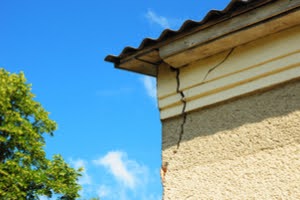
Look for damaged, cracked, peeling, or missing shingles on your roof. Patch up any openings as quickly as possible by resealing or replacing the shingles. Consider having your roof professionally inspected if you notice substantial damage. After you’ve removed bats from your home, use caulk or sealant to fix roofing issues.
2. Vents
Vents are the perfect roost for bats. Sometimes, bats fly all the way through the vent and into your space. Luckily, keeping bats out of your vents is relatively easy. Invest in vent covers. Bat vent covers fit over the end of your vents outside and prevent animals from flying inside. Plan on replacing vent covers every couple of years.
3. Chimneys
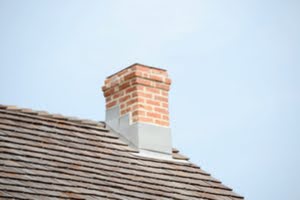
An ideal roost is dark, secluded, sheltered, and easily accessible to bats but not their predators. Chimneys satisfy these requirements, which is why bats roost in them so frequently. Bats hide inside chimneys until dusk, when they leave to hunt. Once inside, they might use chimneys as permanent homes and even raise their young inside. Bats may even decide to fly down the chimney and into your home.
How to Keep Bats Out of Your Attic: Chimney Covers
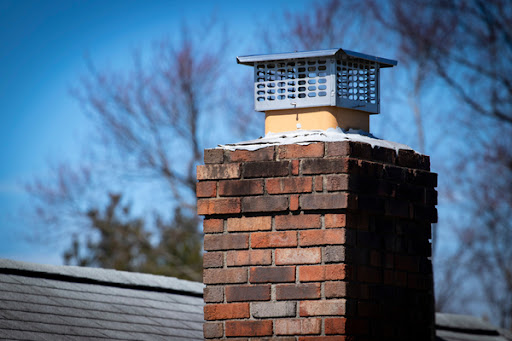
Place chimney covers on your chimneys. These stainless steel, wire mesh covers fit over your chimney to prevent bats from going inside. They often wear out over time, so be sure to replace them every 1-2 years.
4. Gaps in Framing
Over time, door and window frames crack, warp, and begin to break down. When that happens, gaps appear between the frame and wall, window, or door. All kinds of pests, including bats, use these gaps to make their way inside.
Every spring, check the outside and inside of your door and window frames for signs of damage. Keep your eyes peeled for cracks, gaps, and other damage—make sure the door and window sits in the frame properly. Use caulk to fill in any gaps and cracks.
5. Damage to the Fascia
The fascia board is a long, straight board mounted where the roof meets the wall of the house. It supports the roof trusses, the lower edge of the bottom tiles, and the rain gutters. Over time, your fascia board may warp or become damaged. When that happens, bats can squeeze up and under it to access your attics or walls. Inspect your fascia for signs of damage and fix them as soon as possible.
6. Rotting Siding
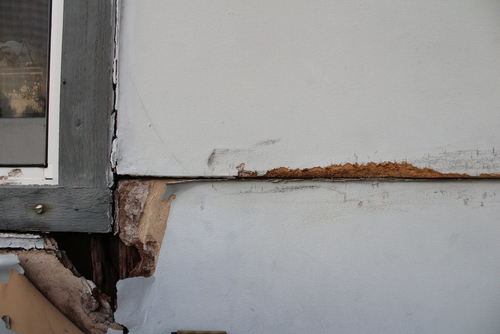
Unfortunately, bats can even use gaps in your siding to get into your home. When siding is damaged, it can reveal small cracks. Bats can easily wiggle through those spaces and find access points into your home or walls. Siding naturally breaks down after enough time and exposure to the elements. Replace damaged, rotting, or worn siding periodically to help keep bats out.
7. Gaps Under the Soffit
Soffits tend to take a lot of abuse from the weather. When they’re damaged, they can easily fall away. Bats can crawl up through damaged soffits and make their way into your attic or walls. If your soffit looks damaged, you should patch it up.
8. Open Windows
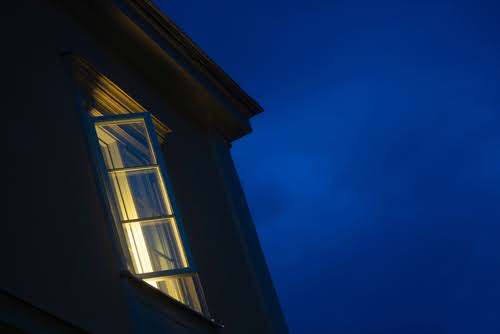
This one sounds obvious, but it happens more often than you’d think! If you keep your windows open, especially at night, make sure your screens are sturdy and well-secured. Don’t leave unscreened windows open for extended periods of time. Consider replacing your screens once a season, even if it seems like they’re not damaged. Be sure to close your windows whenever you’re not home.
How to Find Where Bats are Getting In
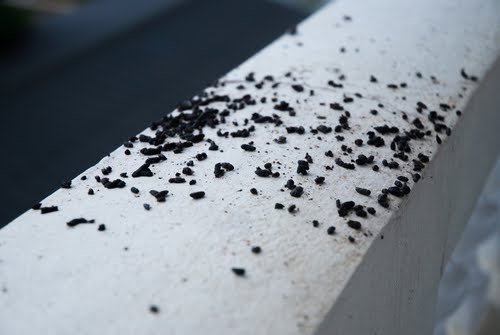
- Bat Guano: This is one of the most noticeable signs. Bat droppings, or guano, are small, dark, and pellet-like. You'll often find them below the primary entry point or where the bats roost during the day. Additionally, guano may accumulate on window sills, porches, or decks.
- Urine Stains: Bat urine can cause noticeable stains on building materials. Look for white or slightly yellowish marks or splashes. Over time, the constant stream of urine can lead to noticeable streaks or staining.
- Grease and Rub Marks: Bats have oil on their fur. Over time, as they squeeze into tight spaces, these oils can leave dark marks or smudges around the entry point. Such marks are especially noticeable on lighter colored surfaces.
- Noise: If you suspect bats are entering your home, you might want to listen during dawn or dusk. At these times, when bats leave or return to their roost, you might hear rustling or flapping noises.
- Visual Confirmation: Watch your house during sunset. Bats are nocturnal and usually leave their roosts at dusk. By observing your home, you may see bats flying out of specific areas.
- Odor: Over time, the accumulation of guano and urine can produce a strong and unpleasant odor. If there's a pungent, musky smell coming from an area in your home, it may indicate the presence of bats.
The Importance of Humane Bat Removal
Bats play a pivotal role in our ecosystem, from controlling insect populations to aiding in pollination and seed dispersal. Their contribution reduces the need for chemical insecticides and promotes forest regeneration. Some bat species are endangered, making their humane removal not only an ecological necessity but also a legal requirement in many regions.
Furthermore, inhumane removal methods can lead to the spread of diseases, potential re-infestation issues, and unpleasant odors from deceased bats in inaccessible home areas. By opting for professional and effective bat removal, homeowners ensure the well-being of these beneficial creatures, align with modern societal values, and address practical concerns related to safety and home integrity.
Keep Bats Away with Professional Bat Exclusion & Removal Services
You can do your best to prevent bats by caulking gaps and cracks and repairing damages to your home. However, the best way to keep bats from entering your home and prevent them from coming back is by hiring a professional wildlife control company. If you’ve got bats in your home, get in touch with Varment Guard. We provide humane and effective bat removal from attics, walls, and more. Plus, after we’ve kicked them out, we’ll make sure they can’t get back in!







